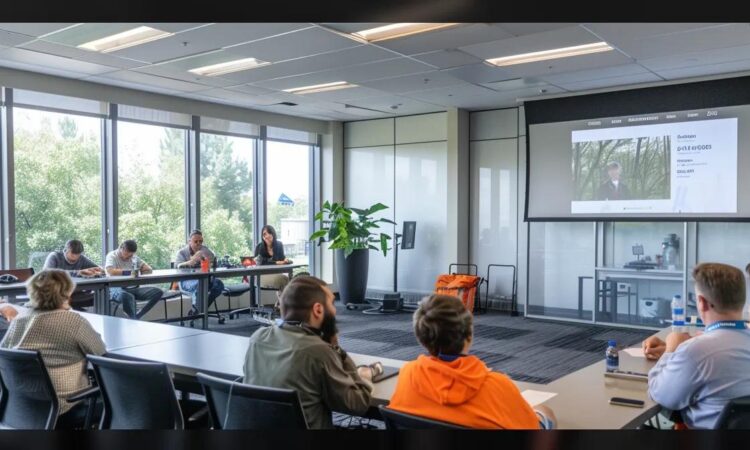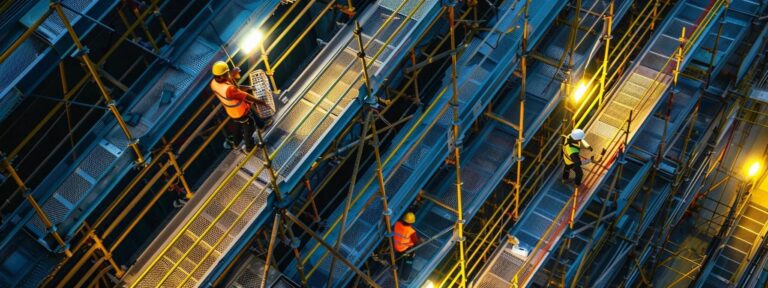Essential Fall Protection Solutions for Public Buildings: What You Need to Know
Public building safety is essential to protect occupants and staff. In many industries-we-serve environments, fall protection is a critical element of occupational safety, where the design-installation of ladder systems and lifeline-systems plays a key role in minimizing risks, accidents, and hazards from working at heights. The guide below explains fall protection in public buildings, covering both permanent and temporary systems, regulatory compliance, and annual maintenance protocols.
Understanding Fall Protection Requirements in Public Buildings
Ensuring fall protection (us fall protection) in public buildings prevents accidental falls and serious injuries. Public spaces with multiple levels, stairwells, balconies, and uncovered openings have significant risk factors that often require robust lifeline-systems and ladder systems. These hazards must be identified by experienced safety inspectors through evaluations of slippery floors, abrupt level changes, and insufficient barriers so that appropriate measures, including design-installation and annual maintenance of safety solutions, can be implemented.
Building owners must comply with national and international regulations such as OSHA standards, local building codes, and ANSI requirements. In addition, a proper design-installation approach helps ensure that construction or retrofitting projects incorporate permanent guardrails, us fall protection, safety nets, and effective screening for openings. Regular documentation of inspections and prompt remediation, combined with annual maintenance checks, help avoid litigation and secure occupant safety.
Facility managers should conduct regular risk assessments using detailed checklists—ensuring that elements like ladder systems and us fall protection measures are considered alongside hazard analysis protocols. Such assessments evaluate floor conditions, maintenance practices (often incorporating annual maintenance) and the quality of installed protection systems, sometimes necessitating design-installation reviews. Real-world examples show that proactive risk assessments can reveal overlooked hazards, allowing corrective actions before accidents occur. For further insights, our blog provides additional guidance.
Proactive fall prevention not only protects lives, it also enhances a facility’s reputation. Preventive measures like employee training, periodic safety audits, annual maintenance, and the use of both permanent and temporary solutions have been shown to reduce incident rates by up to 40%. In addition to personal precautions, robust engineering solutions such as ladder systems help preemptively address fall scenarios, ensuring us fall protection is maintained.
Exploring Permanent Fall Protection Systems for Long-Term Security
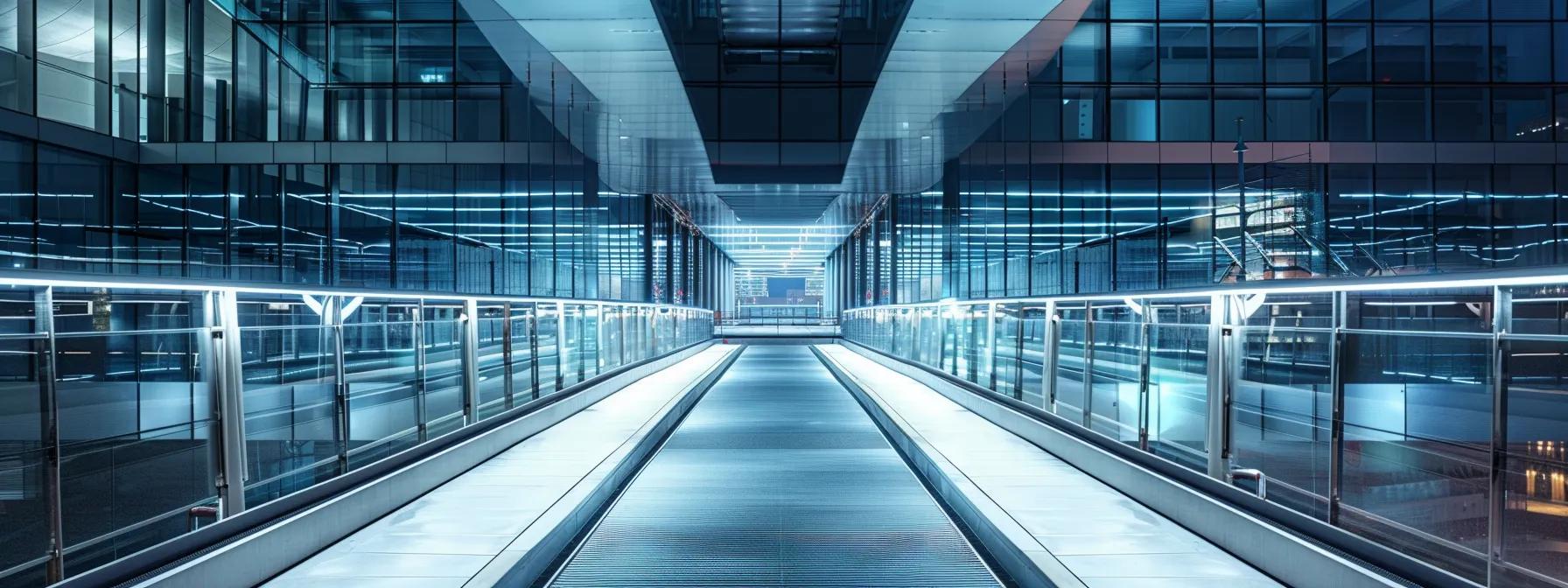
guardrail systems are foundational for permanent fall protection. They provide a physical barrier to prevent falls from elevated areas. Typically made of steel or aluminum, guardrails are engineered to bear significant loads and resist penetration. With our design-installation expertise and annual maintenance services, studies have shown that properly installed guardrails can reduce fall incidents by over 60%, making them ideal for high-footfall areas such as mezzanines, balconies, and rooftop walkways. For more detailed information on industries-we-serve, visit our blog and get a free quote.
Fixed anchor points and lifeline-systems are also critical, a key component of us fall protection. Fixed anchor points serve as secure attachment locations for lifelines that arrest a fall by providing controlled deceleration—a benefit achieved through expert design-installation. Regular annual maintenance ensures these systems remain reliable, and in some cases, supplemental ladder systems are employed to access difficult areas. In environments where workers are near open edges or roofs, these systems can lower the risk of serious injury by up to 70% when properly installed. For further details or to get a free quote, please reach out to our team.
Safety netting, made from high-strength synthetic fibers and following design-installation protocols, acts as a sacrificial barrier, protecting large work areas where traditional guardrails cannot be used. Annual maintenance procedures further support the system’s integrity, while standardized drop tests conducted by us fall protection experts ensure that safety nets minimize deceleration forces, reducing injury upon impact.
Rooftop walkways and platforms are designed to provide secure access to elevated areas. Employing design-installation best practices, they incorporate parapets, ladder systems, non-slip surfaces, and integrated fall arrest systems. These engineered designs ensure safe movement even during peak usage, and require minimal annual maintenance due to their durability.
Integrating permanent fall protection systems through design-installation during the building design phase allows architects to balance safety with aesthetics. For existing buildings, retrofitting measures like installing guardrails, expanded access platforms, lifeline-systems, and secure anchorage points—coupled with annual maintenance—help cover previously overlooked areas. Precise engineering assessments ensure that these enhancements integrate seamlessly with the building’s structure with little disruption to operations.
Utilizing Temporary Fall Protection Systems for Flexible Safety
Temporary guardrails are vital during maintenance (annual maintenance) or construction activities in us fall protection applications. They are easily installed and removed, making them ideal for situations where permanent installations, such as those requiring design-installation support, are impractical due to ongoing work or structural modifications. Their modular design allows adjustments based on project requirements and simple relocation within the facility.
Mobile anchoring devices offer another flexible solution for us fall protection. Mounted on portable frames, these devices provide secure attachment points for safety harnesses and lanyards. Their mobility means that workers in various locations can be protected without installing permanent devices—ensuring effective design-installation methods that simplify annual maintenance—thereby reducing setup time and increasing overall safety.
Personal Fall Arrest Systems (PFAS) are designed for temporary work at height and are a critical component of us fall protection. These systems include a safety harness, lanyard, and connecting devices that arrest falls and disperse energy to minimize injury severity. Numerous studies have shown that PFAS, when used correctly, significantly reduce the risk of fatal injury. However, proper training and annual maintenance are essential so that devices are used and maintained correctly. For further insights on design-installation and ladder systems in various industries-we-serve settings, feel free to explore our about-us and blog sections.
Selecting a suitable temporary fall protection measure requires assessing the work environment, specific hazards, and task duration. Factors such as the height and accessibility of the work area guide the decision between using temporary guardrails, mobile anchoring devices, or PFAS. This selection relies on comprehensive hazard assessments and consultations with safety experts to ensure compliance with regulatory standards.
Safe installation and dismantling of temporary safety equipment demand strict adherence to established protocols. Detailed training, use of certified equipment, and following manufacturer guidelines are essential to prevent damage to equipment and injury to personnel. Standard operating procedures and checklists must be used to ensure proper setup and teardown.
Choosing Appropriate Fall Protection for Public Buildings
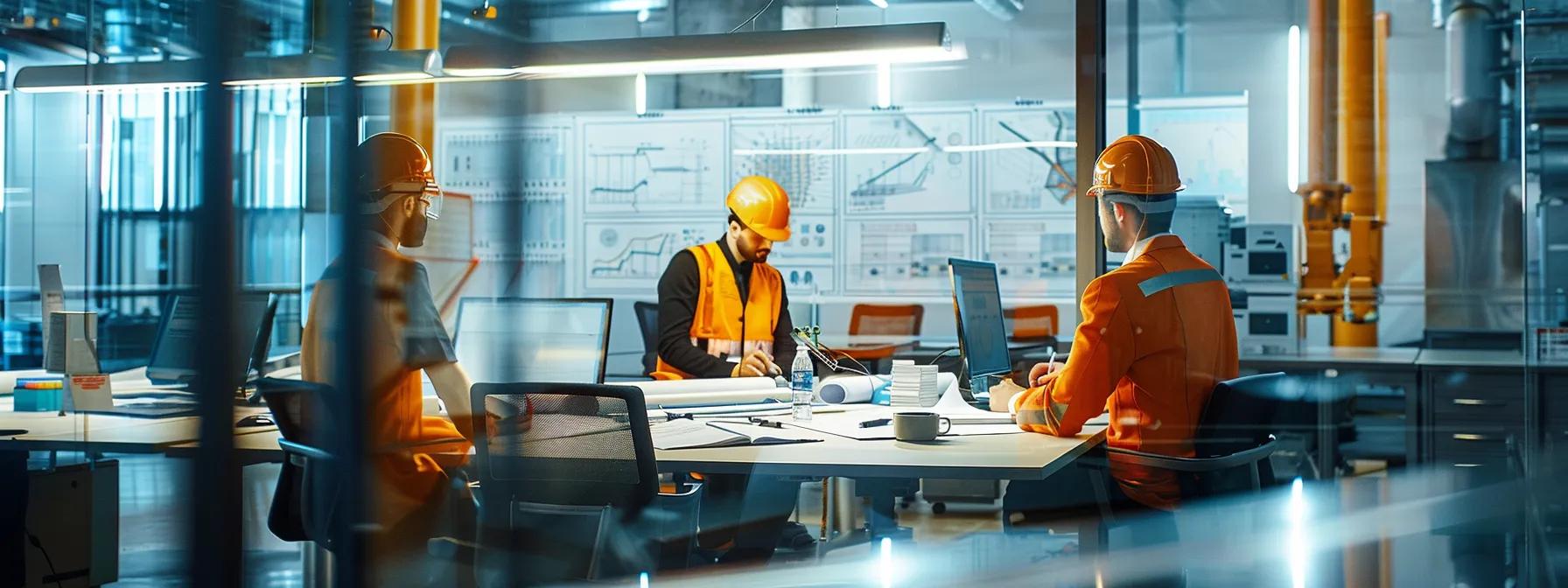
Evaluating a building’s structure and access points is the first step in choosing an appropriate fall protection system. This involves reviewing blueprints, conducting physical inspections, and consulting with structural engineers. Understanding the building’s layout and usage patterns aids in selecting protection systems that work well with both permanent building designs and dynamic everyday operations. For example, areas with many stairs and mezzanine levels benefit from integrated guardrail systems and roofed walkways.
Long-term durability and maintenance are important considerations. Permanent systems, due to their robust construction, require fewer repairs than temporary systems, though regular inspections remain necessary. Conversely, temporary systems might require more frequent checks due to repeated assembly and disassembly. Detailed maintenance schedules and lifecycle cost analyses allow decision-makers to evaluate total ownership costs while ensuring protection is not compromised.
User competency is another crucial factor. Even the most advanced systems are ineffective if used improperly. Training programs must comprehensively cover system installation, inspection procedures, and emergency responses. Selecting systems that match the existing skill levels of the workforce is essential, as improved training correlates with fewer accidents and more efficient use of the equipment.
Budgeting for fall protection must account for both installation and long-term maintenance expenses. A well-planned budget should include material costs, labor, training, inspections, and any potential retrofit expenses. High-quality, durable systems typically yield lower maintenance costs over time and contribute to a higher return on investment through accident prevention. Cost-benefit analyses, including incident reduction data and avoided compliance penalties, help create a strategic budget plan.
Specialized consultants or safety engineers should be engaged for complex building configurations or high-risk environments. These experts provide valuable risk assessments, design recommendations, and insights into evolving safety standards, ensuring that all legal requirements are met while optimizing safety and operational efficiency.
Navigating Compliance and Standards for Fall Protection in Public Buildings
Various safety regulations govern fall protection systems in public buildings. OSHA standards, local building codes, and ANSI guidelines are among the key regulations that ensure safety measures are implemented correctly and maintained continuously. Each regulation outlines specific requirements for inspections, employee training, and documentation to safeguard against hazards.
To meet OSHA requirements, public entities must regularly review safety systems, conduct employee training sessions, and adhere to preventive maintenance schedules. OSHA mandates that every public building deploy a robust fall protection strategy, which includes the use of guardrails, lifelines, and personal protective equipment (PPE) where falls are possible. Strict adherence to these guidelines ensures that the proper fall arrest mechanisms are installed and periodically inspected.
Maintaining thorough documentation is essential for compliance. This includes keeping inspection reports, training logs, maintenance schedules, and incident records. Such documentation not only serves as proof during audits but also helps identify recurring issues for proactive resolution. Standardized record-keeping practices help ensure all systems are periodically reviewed and any deficiencies are addressed promptly, reducing the risk of penalties.
Non-compliance can have severe consequences. Public entities may face hefty fines, legal action, increased liability, reputational damage, and higher insurance premiums. These risks underscore the importance of strict adherence to all regulatory requirements to protect both safety and fiscal interests.
Building managers must stay informed of evolving safety standards. Regular reviews of publications from agencies like OSHA, NAMSA, and ANSI, along with participation in industry seminars and training programs, help ensure that managers remain current on best practices and technological advancements. This commitment to continuous learning is vital for adapting to emerging hazards and maintaining high levels of safety compliance.
Maintaining and Inspecting Fall Protection Systems in Public Buildings
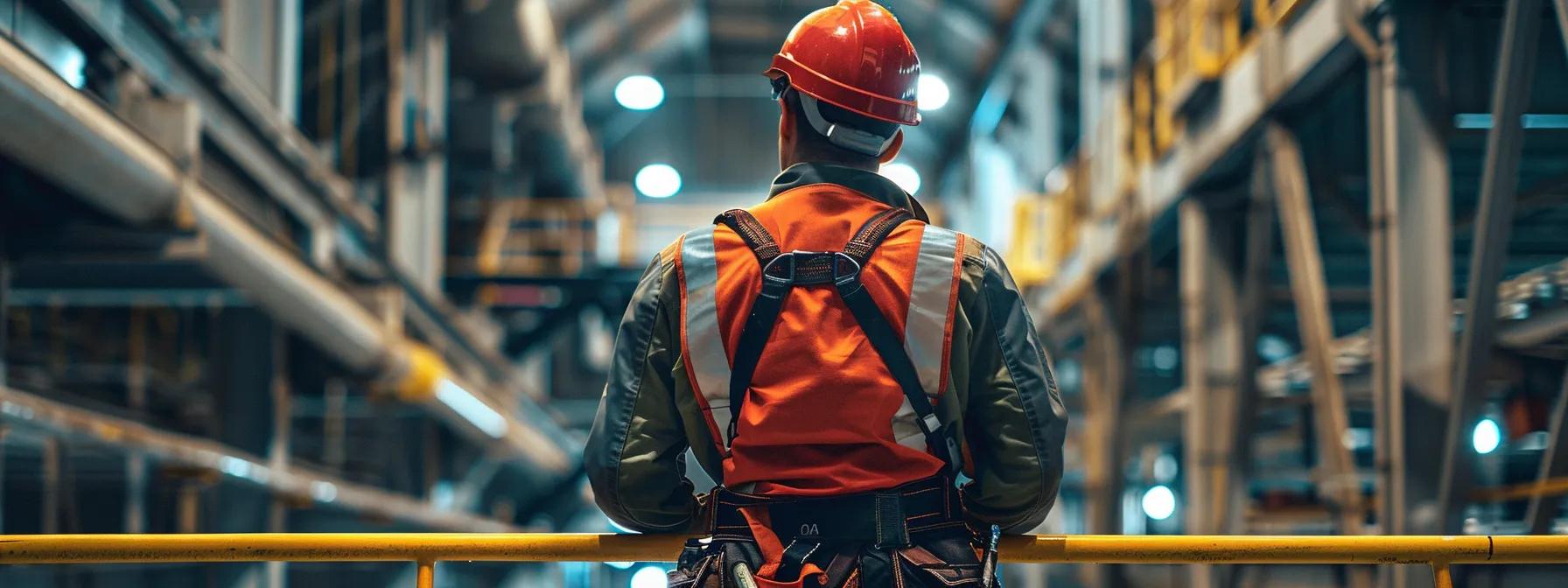
Regular inspection protocols are critical to ensuring that all fall protection systems remain functional. Certified safety inspectors should conduct routine checks of both permanent and temporary systems, using standardized checklists to evaluate guardrails, lifelines, anchorage points, and temporary setups for signs of wear, rust, or damage. These inspections help maintain reliability under daily operational stress.
Indicators of wear in permanent installations include corrosion, loose fittings, and other forms of material degradation. Regular examinations should focus on connection points and welds, with any signs of bending or missing components triggering immediate repairs or replacement. Early identification of these issues prevents catastrophic failure and avoids long-term inefficiencies.
Temporary fall protection gear requires proper care and storage to preserve its effectiveness. Such gear should be kept in dry, temperature-controlled environments away from direct sunlight or corrosive elements. Following manufacturer-recommended cleaning and maintenance protocols is essential to prevent degradation and prolong equipment lifespan.
Training staff to conduct routine equipment checks is vital. Well-trained personnel can quickly identify and report defects before they lead to accidents. This continual training fosters a culture of safety, reducing downtime and enhancing responsiveness to emerging hazards.
Many fall protection systems require periodic recertification to confirm they continue to meet safety standards. Recertification schedules, set by regulatory guidelines and manufacturer recommendations, often involve both laboratory testing and onsite evaluations. Maintaining a strict timetable for recertification ensures that all equipment, whether permanent or temporary, remains reliable and compliant with current standards.
Frequently Asked Questions
Q: What is the primary role of fall protection systems in public buildings?
A: Fall protection systems mitigate risks by preventing accidental falls and reducing injury severity, thereby enhancing overall public building safety.
Q: How often should fall protection systems be inspected?
A: Inspections should be conducted every three to six months, with additional checks following any incident that might affect system integrity.
Q: Which regulatory standards govern fall protection in public buildings?
A: OSHA requirements, ANSI guidelines, and local building codes specify criteria for both permanent and temporary safety systems.
Q: Can temporary fall protection systems be effective in high-risk areas?
A: Yes, when properly installed and maintained, temporary systems such as guardrails and PFAS are highly effective, particularly for short-term tasks or maintenance work.
Q: What training is necessary for utilizing fall protection systems effectively?
A: Comprehensive training should include system installation, inspection procedures, proper use of PPE, emergency protocols, and periodic recertification.
Q: How should building managers budget for fall protection upgrades?
A: Budget planning should cover installation, regular inspections, maintenance, training programs, and recertification fees, emphasizing long-term cost efficiency and risk reduction.
Final Thoughts
Public building safety is reinforced by robust fall protection strategies that combine permanent and temporary systems. Through careful planning, strict regulatory compliance, and continuous maintenance, facilities can offer a safe environment for both occupants and employees. High-quality guardrail systems, reliable lifeline setups, and flexible temporary measures provide comprehensive protection across various building configurations. Focused training and regular inspections further enhance system reliability, making fall protection a cornerstone of modern public safety management.

